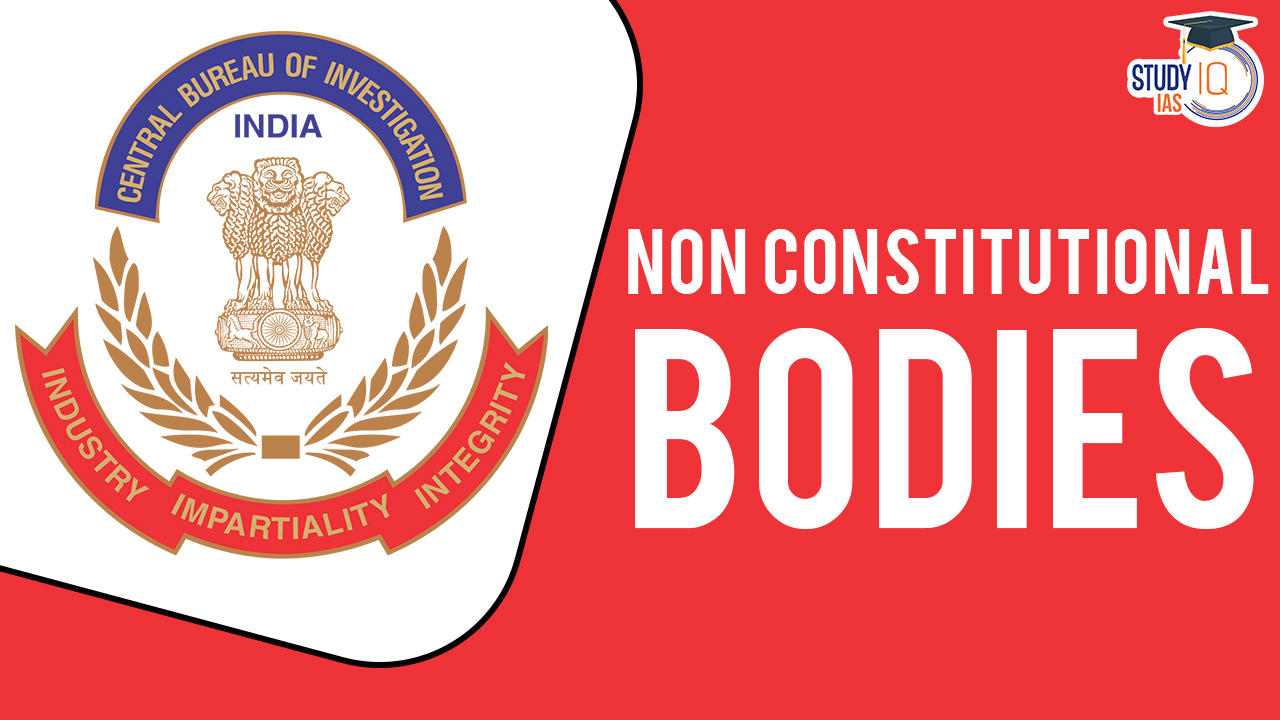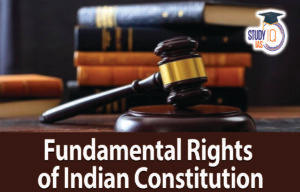Table of Contents
Non-Constitutional Bodies
Institutions or organisations that are not included in the constitution or do not have a constitutional standing are referred to as non-constitutional bodies. As a result, non-constitutional bodies may be established by statute or executive order, known as statutory and non-statutory bodies, respectively. The National Human Rights Commission (NHRC), NITI Aayog, Telecom Regulatory Authority of India (TRAI), and others are a few examples of non-constitutional bodies.
Non-Constitutional Bodies in India
A non-constitutional body is an organisation or entity that is not mentioned in the Indian Constitution. Unlike a constitutional body, a non-constitutional institution lacks the authority granted by the Indian Constitution. The majority of the time, the authority of a non-constitutional body comes from laws passed by the Indian Parliament. Central Information Commission (CIC) is an example.
Non-Constitutional Bodies Types
Non-constitutional bodies are broadly categorised into the following categories according to how they obtain their authority and function:
- Statutory Bodies
- Non-Statutory Bodies
|
Non-Constitutional Bodies Types |
|
| Statutory Bodies | Non-Statutory Bodies |
| Institutions known as Statutory Bodies often receive their authority from legislation passed by the Indian Parliament. Examples include the Lokpal, Lokayukta, and Central Information Commission (CIC).
Statutory based on based on their role are divided into two types:
A regulatory body is a government organisation tasked with exercising independent control over a particular area of human activity through regulation or supervision. Examples include the Telecom Regulatory Authority of India (TRAI) and the Reserve Bank of India (RBI). Quasi-judicial entities are non-judicial organisations with legal interpretation powers, such as Commissions or Tribunals. Their purview is more constrained than that of a court, setting them apart from judicial bodies. National Human Rights Commission (NHRC), as an example. |
Institutions known as Non-Statutory Bodies acquire their authority from executive orders and resolutions rather than from any legislation. Consider the Central Bureau of Investigation (CBI) and NITI Aayog.
An organisation without legal jurisdiction is referred to as a non-statutory body. The duties and responsibilities of a non-statutory organisation are not clearly established or defined. On the other hand, non-statutory organisations work to accomplish their own objectives, which may or may not be compatible with those of the legislation. In essence, “non-statutory” is just another way to say “common law.” As a result, such groups are only established by executive resolution or action, suggesting that only government activity is involved in their establishment. By passing new legislation or amending existing legislation, they can be made statutory bodies. They are not governed by any government, have a less formal structure, and it is unclear what their responsibilities and powers are. They are not governed by formal authorities, lack a clearly defined organisational structure, and lack established powers and authority. For Example, NITI Aayog, National Development Council, and National Assessment and Accreditation Council (NAAC). |
Difference Between Constitutional and Non-Constitutional Bodies
Check the difference between the constitutional and non-constitutional bodies in the table below:
| Constitutional Bodies | Non-Constitutional Bodies |
|
|
List of Non-Constitutional Bodies & Constitutional Bodies
| Constitutional Bodies | Non-Constitutional Bodies |
|
|
Important Non-Constitutional Bodies
In contrast to a constitutional body, a non-constitutional institution lacks the authority granted by the Indian constitution. A non-constitutional body often derives its authority from laws passed by the Indian Parliament. Some of the non-constitutional bodies are discussed below:
|
Important Non-Constitutional Bodies |
|
| Non-Constitutional Bodies | Details |
| National Human Rights Commission (NHRC) | The Protection of Human Rights Act of 1993 established the National Human Rights Commission as a statutory authority. The commission is responsible for monitoring the country’s human rights. The protection and promotion of “rights to life, liberty, equality, and dignity of the individual guaranteed by the Constitution or enshrined in the International Covenants”.
Composition: It is a multi-membered body consisting of a chairman and five full-time members. Qualification:
Appointment:
Term of Office:
Initially, it was 5 years and 70 years of age but the Protection of Human Rights (Amendment) Bill 2019 brought these changes. Removal:
Function
|
| NITI Aayog | The Union Cabinet passed a resolution on January 1, 2015, creating the National Institution for Transforming India, or NITI Aayog. It is the top policy “Think Tank” of the Indian government, offering input on direction and policy.
Organization:
Composition:
Objective
|
Non-Constitutional Bodies UPSC
Not every institution that exists could be covered by the Constitution. Additionally, not all organisations need constitutional standing because it costs money to keep them operating and doing their duties. Since many institutions are ad hoc in nature, they might not need full constitutional standing in order to carry out their duties.


 Lok Sabha Election 2024, Started Form 19...
Lok Sabha Election 2024, Started Form 19...
 Fundamental Rights of Indian Constitutio...
Fundamental Rights of Indian Constitutio...
 BR Ambedkar Birth Anniversary, Biography...
BR Ambedkar Birth Anniversary, Biography...

















